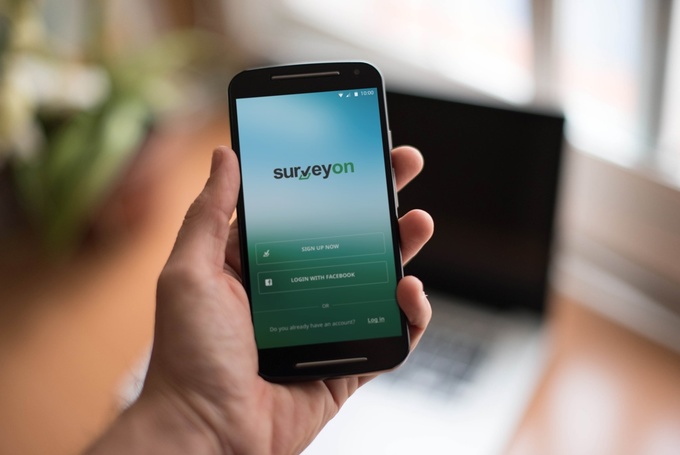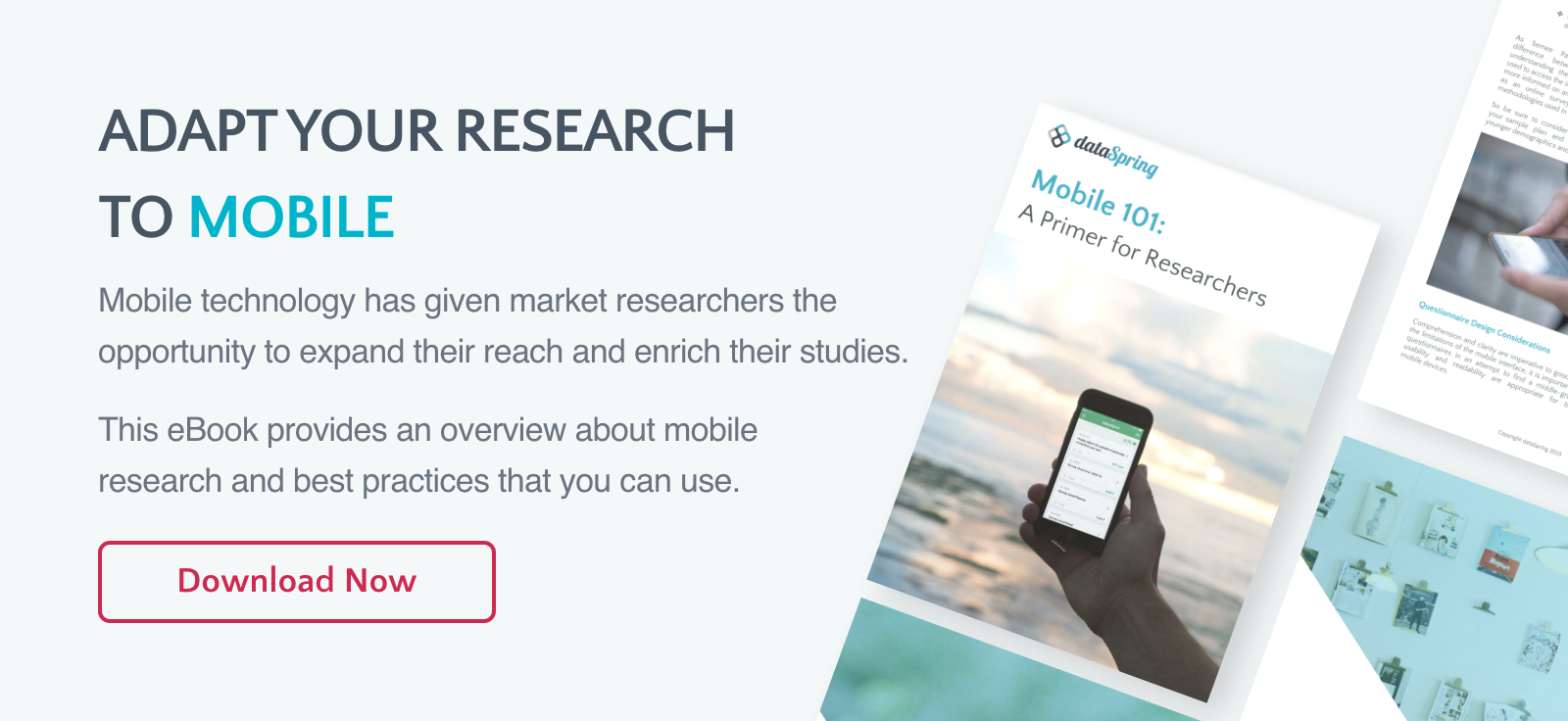
In the market research industry's continuing quest to find more efficient and cost-effective approaches to data collection, online appeared to be the answer.
As internet-reach climbed and the industry, through groups like ESOMAR, developed best practices for online sample and data collection, researchers, consultants, and corporate users began adapting their offline methods to online. And just as the industry got comfortable, the smartphone revolution arrived, and another data collection option was born.
It is important to differentiate between surveys taken on mobile devices and what is becoming known as 'mobile first' studies. The ESOMAR/GRBN Guideline for Online Sample Quality report estimates that 20% to 30% of research respondents are already responding to online surveys via smartphone or other mobile devices. A mobile first study is specifically designed for the mobile platform and utilizes a mobile panel.
Online and mobile first methods are certainly not mutually exclusive, and both should be part of the market research toolbox (just as offline methods like face-to-face and phone surveys are still reliable options depending on the region and research objective).
So, what are the key differentiators between mobile vs. online research, and how should this be used to choose which approach is most suited to your study?

1. Sample Quality
The first step to sample quality - whether it is online or mobile-first - is using a reliable and reputable sample provider. That being said, mobile has some advantages with duplication control. While online panels use cookies, or IP-based duplication protection, these are not foolproof, as a respondent intent on providing multiple responses have ways around them. Mobile control is stronger as the individual device information is captured and so easier to flag.
2. Target Audience
While it seems as if 'everyone' is on a smartphone, from a research standpoint, mobile's strength is in reaching younger consumers and those on-the-go, hard to reach audiences like business people and professionals. Online is generally better and more cost efficient when needing to reach broader 'gen-pop' samples.
3. Response Rates
Average email open rates (used in online research invitations) hover around ~25% with a CTR of 2-3%. Mobile reaction rates (% who click on a push notification) are ~18%. While these are broad industry averages, mobile has the edge in engaging with a higher number of potential respondents.
4. Depth of Response
In pure quantitative data terms, online has the edge on the amount of data that can be collected in a single survey. Mobile respondents do not have the patience for lengthy surveys and the interface is not suited to complex questions or long response/attribute batteries.
But if your definition of depth means capturing photos, sound clips, and videos, mobile is the way to go. Approaches like mobile ethnographies provide a layer of insight into the thinking process of consumers that online cannot deliver.
5. Methodology
Brand trackers, segmentation and other data-heavy methodologies are not appropriate for mobile. The online platform is much more capable in terms of question type and in running more advanced methods like conjoint, choice modeling and max/diff studies.
Mobile, however, is bringing a whole new dimension to research through its in-the-moment capabilities. A mobile survey is great for shopper and experience research and technologies like geo-fencing can intercept respondents when visiting certain venues or stores.

6. Stimuli Presentation
Online opened up a whole new approach to ad, concept and package research by being able to efficiently present quality image and video stimuli. Mobile's small screen is not appropriate for this type of research as the size and inconsistency of viewing experience does not allow for a standardized presentation.
In Conclusion…
Mobile research should be thought of as a complementary method to online, not a replacement. For traditional studies, like trackers, segmentations, and trade-off methods, as well as anything with stimuli, online is the clear choice. On the other hand, mobile has the ability to unlock research from the home or office environment and gather insights that have more immediacy and nuance.
Due to advances in mobile device technology and widespread adaption of mobile phones for online access, especially in Asia, mobile research has become a powerful tool for market researchers to harness. If you want to know more about mobile research, how to enhance your methodology toolbox, and Asia mobile panels, check out our Mobile Research Essentials page.


 Download Panel Book
Download Panel Book


